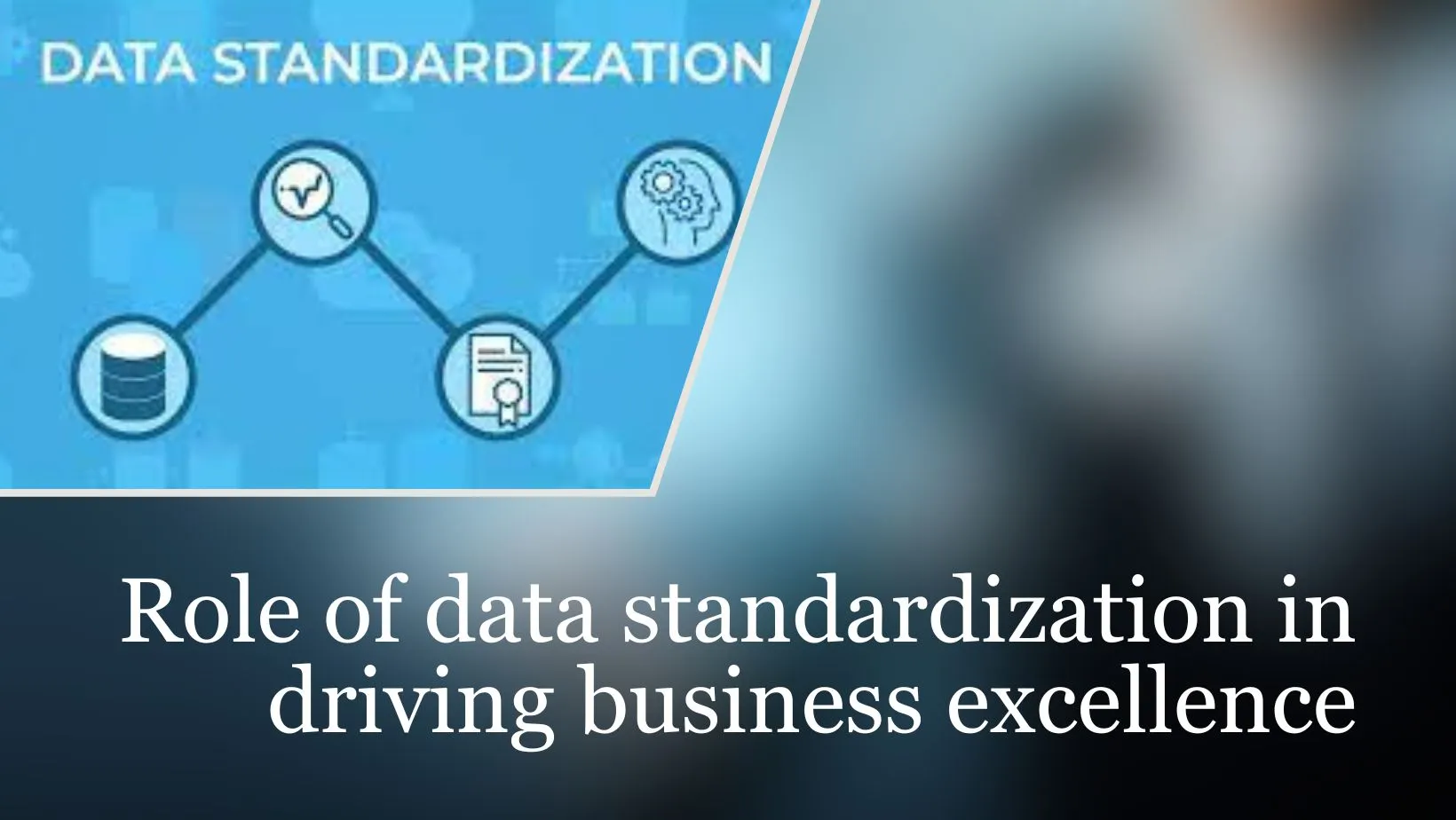The role of data standardization in driving business excellence

Organizations gather data from multiple sources. They store and use it across multiple SaaS and in-house applications. Naturally, this data varies in format, structure, and quality standards. If data from any of these systems are merged for any purpose, or the data itself has been collected from disparate sources, it is bound to contain discrepancies (misspellings, abbreviations, nicknames, and typing errors), which create different representations for the same values.
Such poor data can often lead to a high failure rate in business initiatives. But, you can protect your business from this loss through data standardization – an integral part of the data cleansing process that ensures consistent data format, structure, and presentation across a dataset, enhancing utility and enabling better business decisions.
Why is it important for businesses to standardize their data?
- Enhanced decision-making
Inaccurate or inconsistent data can lead to poor data quality. Relying on such flawed information can cost companies around $13 million annually. When data is standardized, decision-makers can rely on consistent and accurate information. They can confidently analyze trends, make predictions, and formulate strategies based on a reliable foundation.
- Improved efficiency
When data follows a uniform structure, it’s easier to input, organize, and retrieve. This promotes efficient data processing and management. Moreover, this efficiency translates into time savings and enables employees to focus on higher-value activities instead of improving data quality that drives business growth.
- Streamlined reporting and analysis
Standardized data ensures that all data is structured and organized in a consistent manner. This uniformity makes it easier to generate reports and conduct data analysis. This leads to quicker insights and more efficient reporting processes because analysts don’t have to spend time deciphering and cleaning data; they can focus on extracting valuable insights.
- Cost savings
Standardized data reduces inefficiencies in data management by eliminating duplication, redundancy, and inconsistencies in data. This helps businesses save on data storage costs because they’re not storing the same information multiple times. Additionally, processing and maintaining clean, standardized data is less resource-intensive, which results in cost savings over time.
- Efficient data integration
Standardized data acts as a common language that different systems and datasets can understand. When businesses acquire or merge with other companies, integrating their data becomes significantly easier. This simplifies the integration process, reduces the risk of errors, and saves time and effort that would otherwise be spent reconciling incompatible data formats or structures.
What are the best practices for data standardization?
- Set data standards and guidelines
This is a fundamental step in data standardization. Clear standards help maintain data cleanliness, reliability, and organization. This involves defining data quality metrics, naming conventions, data types, validation rules, and documentation. These standards will serve as your data’s rulebook and ensure that every employee in the organization understands how data should be structured and presented.
- Bring all of your data into one place
Scattered data creates confusion, inconsistencies, and inefficiencies. To deal with this issue, centralize your data. When data is consolidated in a single location, it becomes easier to implement consistent validation rules and procedures. This ensures that data follows a uniform format, meets predefined criteria, and is free from discrepancies.
- Evaluate data sources
To safeguard your business from the negative impacts of poor data quality, it’s essential to tackle data standardization at the source – where data is first generated or collected. This means implementing data cleansing and transformation processes as data enters your system. This does not let you spread the poor data down the line and store clean and accurate data from the beginning.
- Train your employee
Your data standardization efforts rely on the people who interact with data daily. Training your employees on the established data standards and best practices is essential. This training empowers them to contribute to data quality by following established protocols. It also reduces the chances of data discrepancies and errors.
- Utilize automated tools
Automation tools and processes reduce the need for manual data entry, which is prone to human errors. Automation streamlines data collection and entry, ensuring that data is consistently formatted and stored in accordance with your standards. This not only improves data quality but also saves time.
Is your data standardized today?
The answer to this question holds the key to unlocking the full potential of your data-driven endeavors. Remember, that the journey toward clean data is an ongoing one. This principle equally applies to all aspects of cleaning data, including standardization.
You must inspect both existing and incoming data. Adherence to the best practices and regular observation to identify the need for data standardization are your allies in this race against time to keep your data useful. But, if the process feels overwhelming, consider seeking assistance- hire a dedicated expert in-house or outsource data cleansing services (you may not find isolated data standardization service packages as it is often included under data cleaning).
Just, keep in mind that the data you standardize today will shape your business’s success stories of tomorrow.
